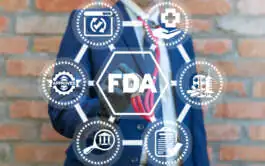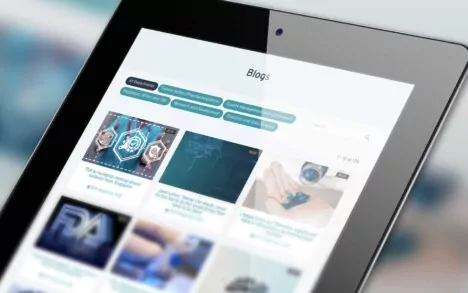The EU legislation for substances of human origin (SoHOs) has been revised, bringing blood products, tissues and cells under one regulation1. The new regulation was adopted by the European Council on 27 May 2024 and the previous directives 2002/98/EC (blood products) and 2004/23/EC (tissues and cells) will be repealed.
SoHOs can be used to manufacture products covered by other EU legislation, including medical devices, medicinal products, investigational medicinal products and advanced therapy medicinal products (ATMPs). The new SoHO legislation also introduces extended requirements and obligations for products regulated by the other EU legislations.
Defining objectives
A primary objective of the new regulation is to improve the quality and safety of SoHOs to “ensure a high level of human health protection” and preventing the human body or its parts from being a source of financial gain.
In describing its reasons for the regulation update, the European Council explained that the previous framework was not up to date with scientific developments and thus didn’t provide adequate protection. Furthermore, different oversight systems at the various member states “has hampered the cross-border exchange of blood, tissues and cells and has not promoted innovation in this sector.”2
The legislation also seeks to improve harmonization between EU member states and to facilitate cross-border exchange and patient access to SoHOs.
In its response to the new legislation, the European Confederation of Pharmaceutical Entrepreneurs (EUCOPE) commended measures aimed at making SoHo accessibility in Europe easier, stating “we believe the Regulation can promote the EU’s strategic autonomy and reduce dependence on imports from third countries 3.”
Resulting changes
Extended scope: The legislation extends to intestinal microbiota and breast milk, and any other human derived material in the future. It also covers activities from donor registration and history, collection, testing, processing, quality control, storage, release, distribution, import, export, human application, and clinical outcome registration.
Centralized coordination: It also establishes an EU-level SoHO coordination board (SCB) to support member states in the implementation of the legislation.
Establish national authorities: Member states are expected to designate a competent authority to authorize SoHO preparations and have oversight of SoHO-related activities.
Licensed establishments: Establishments that process and store, release, import or export SoHOs are also subject to additional authorization and inspection requirements, including routine inspections, announced or unannounced inspections, inspections to target a specific activity, and, where necessary, follow-up inspections.
Register of establishments: The legislation also requires that SoHO national authorities use the EU SoHO Platform to register entities and securely exchange information. Additionally, competent authorities are expected to use the SoHO rapid alert procedure to quickly communicate any serious incidents or reactions that are likely to pose a risk for recipients or donors.
What the legislation means for ATMPs
For developers of ATMPs, the new legislation significantly extends the activities covered. Previously, the regulation only covered donation collection and testing. Now, donor registration, collection and testing, as well as storage, distribution, import, export and distribution to the ATMP manufacturer are covered.
This has a significant impact on the ATMP developers as all parties handling any of the SoHO activities, now known as SoHO entities, must comply with the new SoHO regulation. These SoHO entities are expected to appoint a responsible person to ensure the requirements are adhered to.
The new SoHO legislation also provides a mechanism for harmonizing classification of borderline products i.e. products that may fall between different legislations regulated by their respective competent authorities. The national competent authorities for SoHOs can request in consultation with other regulatory sectors, such as ATMPs and medical devices, for an opinion from the new SCB on the regulatory status of the product or the substance. Where national competent authorities for SoHOs decide not to follow the SCB’s opinion, they are expected to justify their decision in consultation with other regulatory sectors, for example, through regulation 1394/2007 on ATMPs4. The European Commission may, in such cases, issue a final regulatory status. This is expected to greatly facilitate harmonization of borderline product classification in the EU.
Preparing for the new legislation
With the legislation now published in the Official Journal of the European Union, any SoHO entity has until 7 August 2027 to transition. Understanding the legislation and the use of SoHOs should be a priority for any organization developing ATMPs.
About the author:
Tiina Palomäki is director, principal consultant, at PharmaLex. She is a geneticist with more than 15 years of pharmaceutical regulatory experience at the national and at the EU level and 13 years in biotechnological and biomedical research. Tiina has in-depth scientific knowledge and regulatory experience with various cell-based and gene therapy products in the areas of immune-oncology, CAR-T products, regenerative therapies, and gene editing.
1 New EU rules on substances of human origin, European Commission, May 2024. https://health.ec.europa.eu/blood-tissues-cells-and-organs/overview/new-eu-rules-substances-human-origin_en
2 Council adopts new rules on substances of human origin, May 2024. https://www.consilium.europa.eu/en/press/press-releases/2024/05/27/council-adopts-new-rules-on-substances-of-human-origin/
3 EU Regulation on Substances of Human Origin officially adopted, EUCOPE, June 2024. https://www.eucope.org/eu-regulation-on-substances-of-human-origin-officially-adopted/#:~:text=The%20new%20Regulation%20aims%20to,clinical%20outcome%20monitoring%20of%20SoHO.
4 Regulation (EC) No 1394/2007 of the European Parliament and of the Council of 13 November 2007 on advanced therapy medicinal products and amending Directive 2001/83/EC and Regulation (EC) No 726/2004. https://eur-lex.europa.eu/legal-content/en/ALL/?uri=CELEX%3A32007R1394








